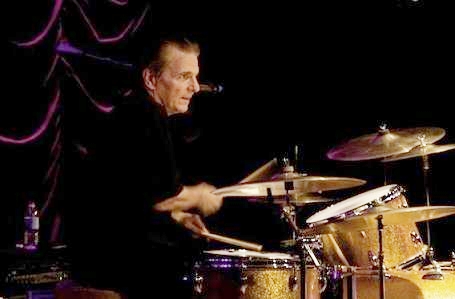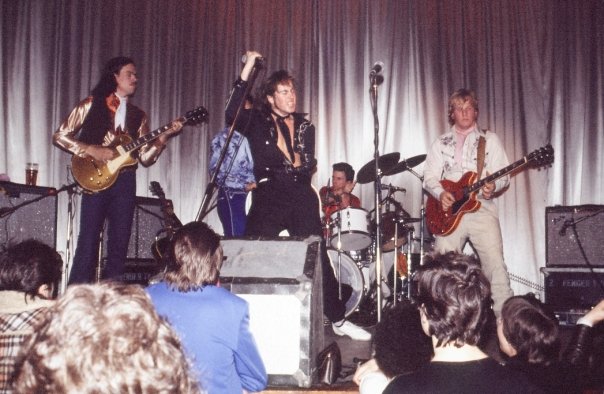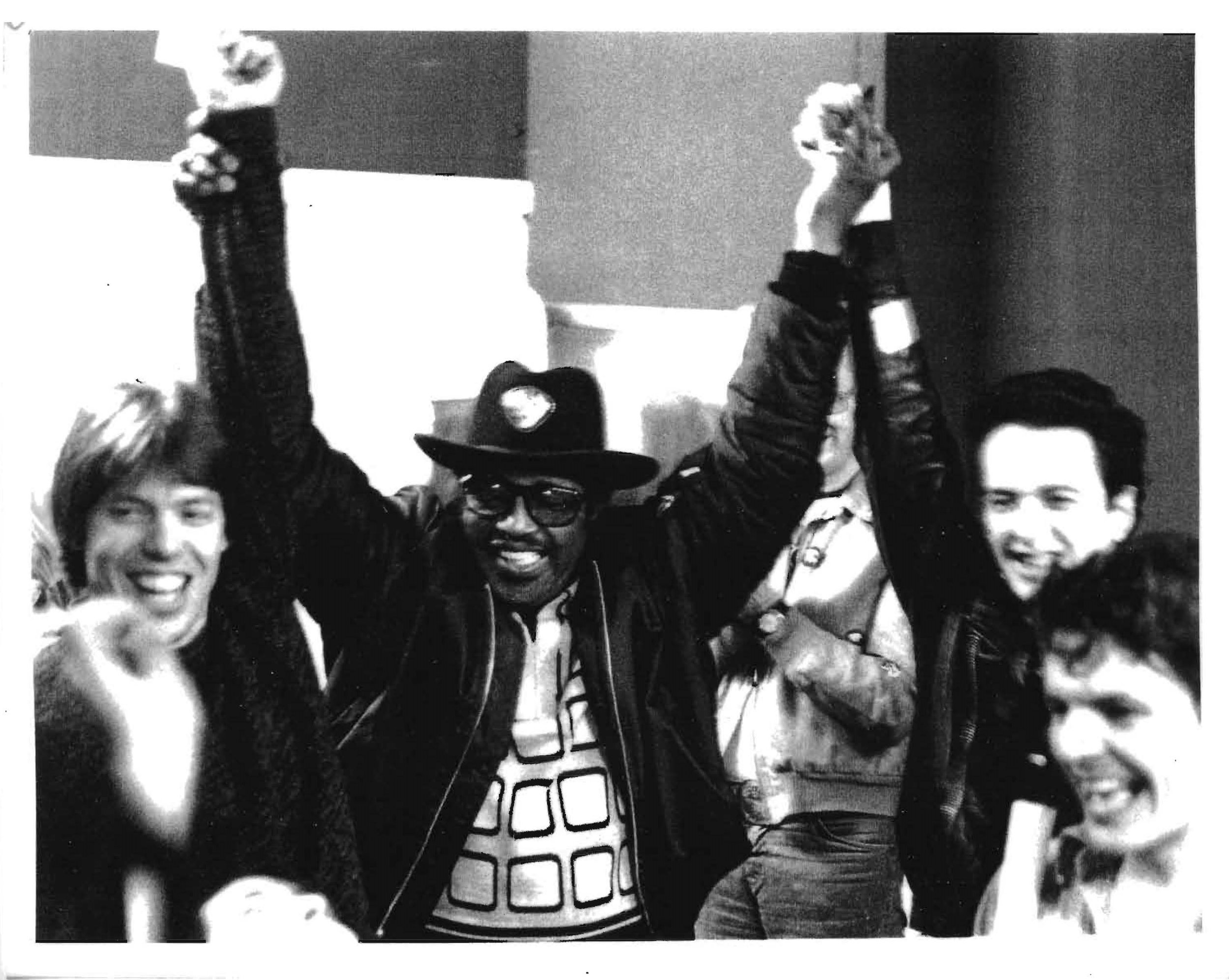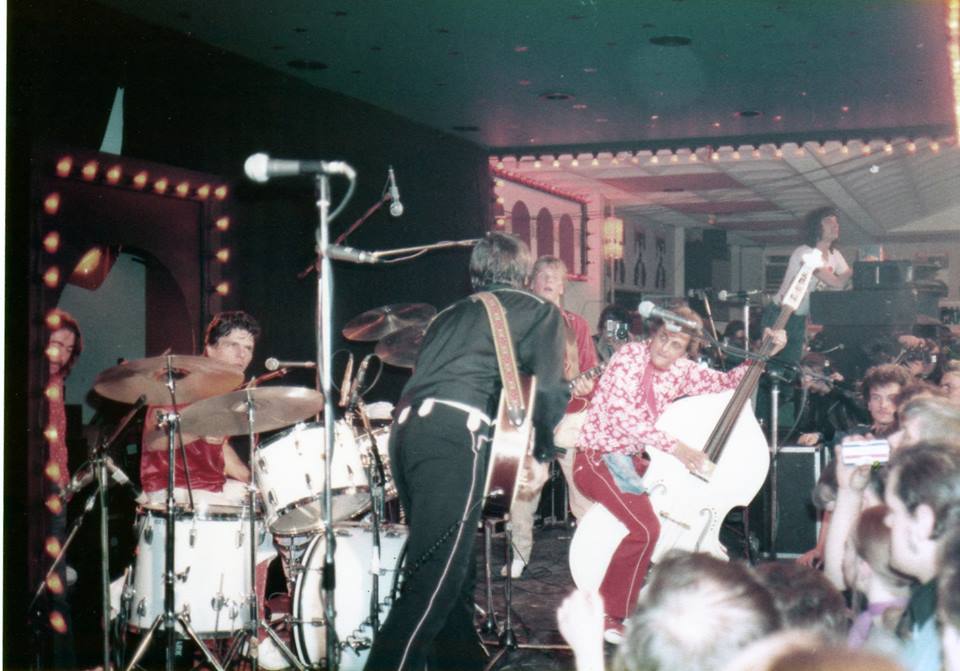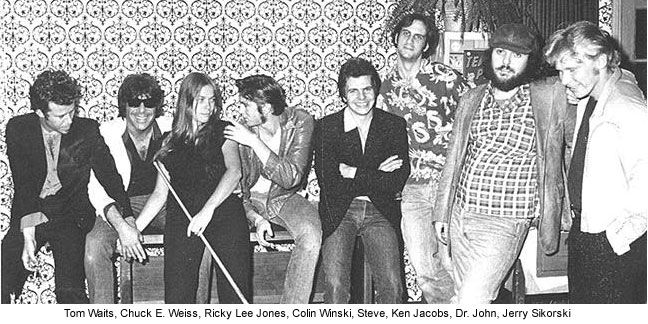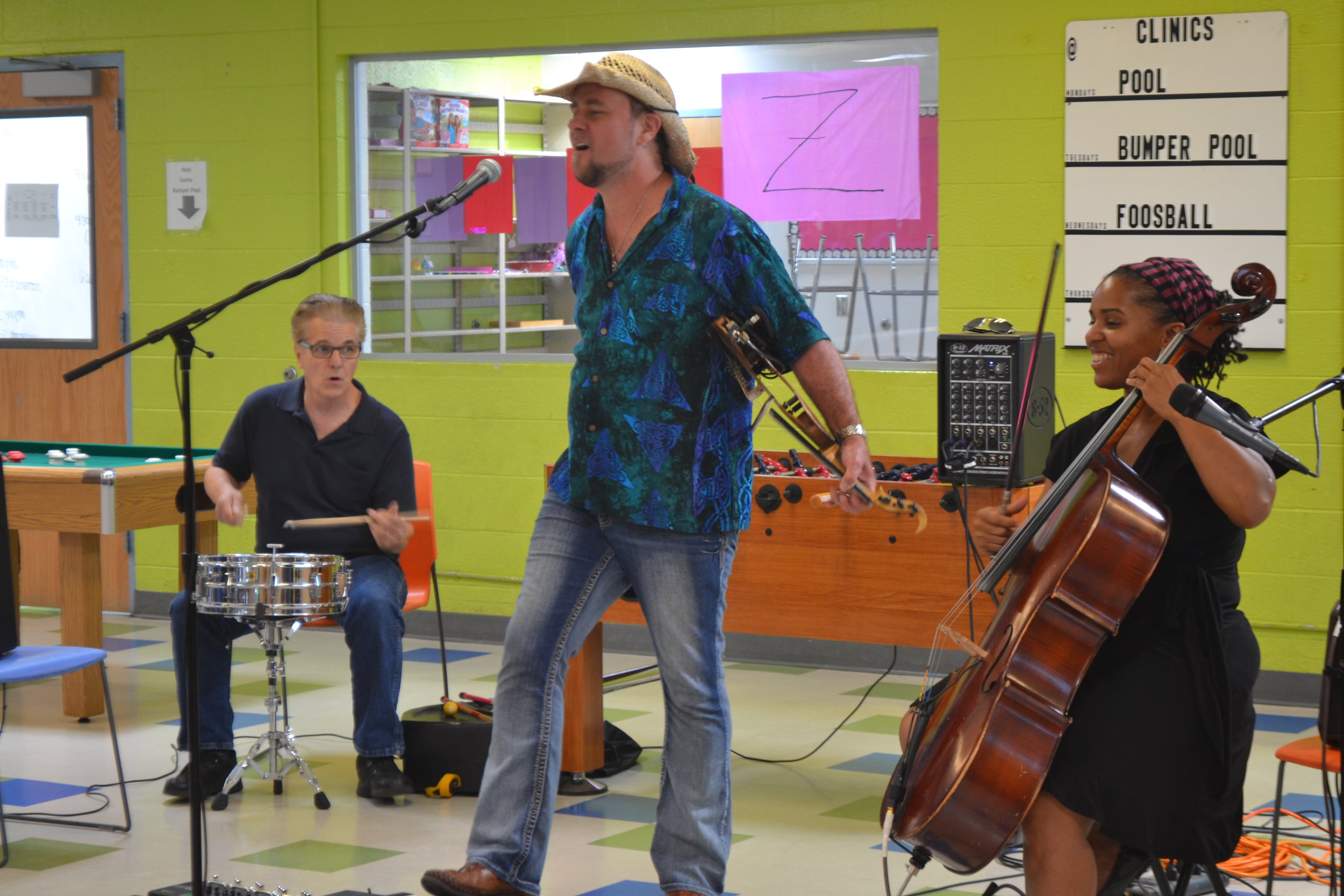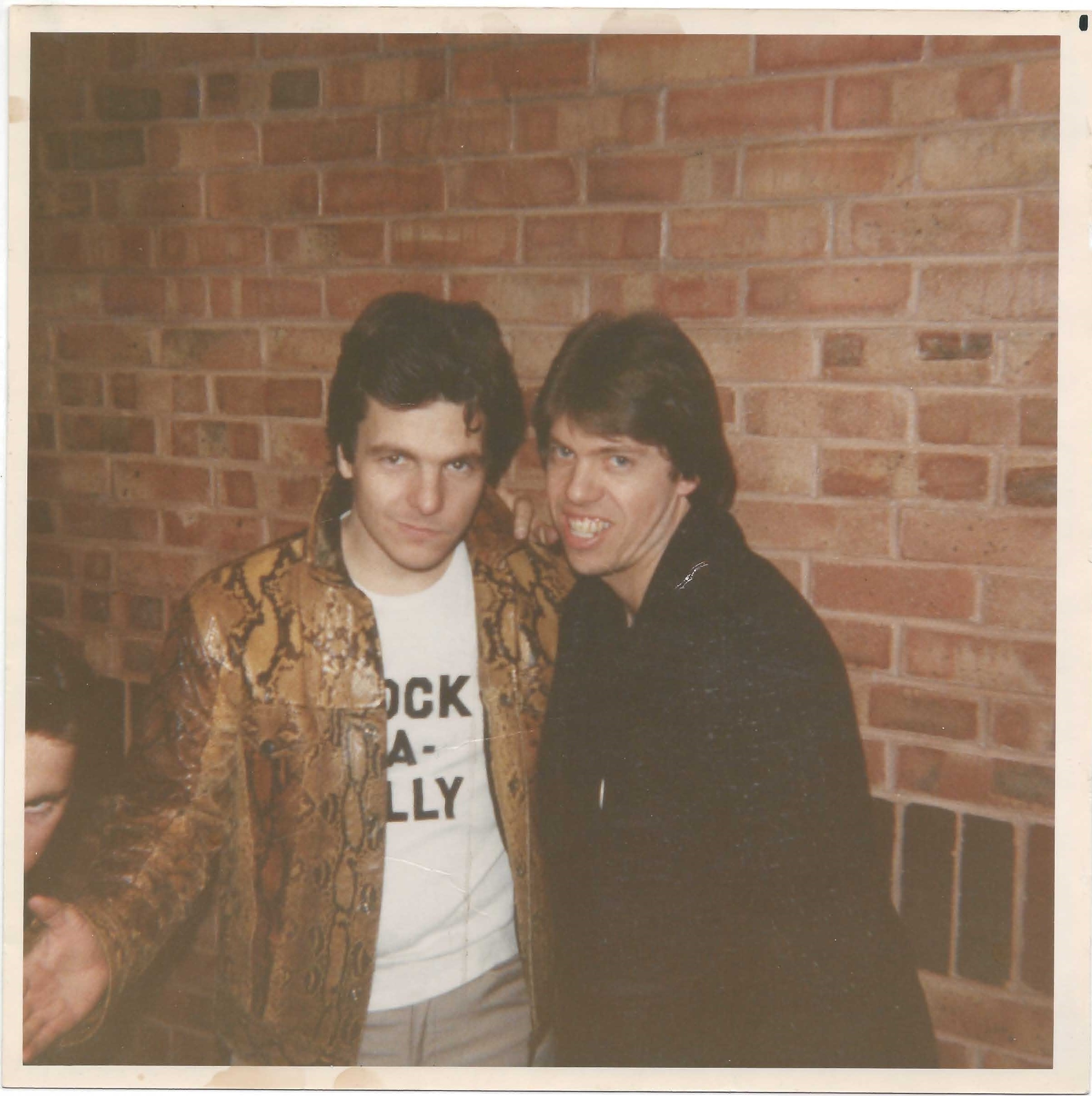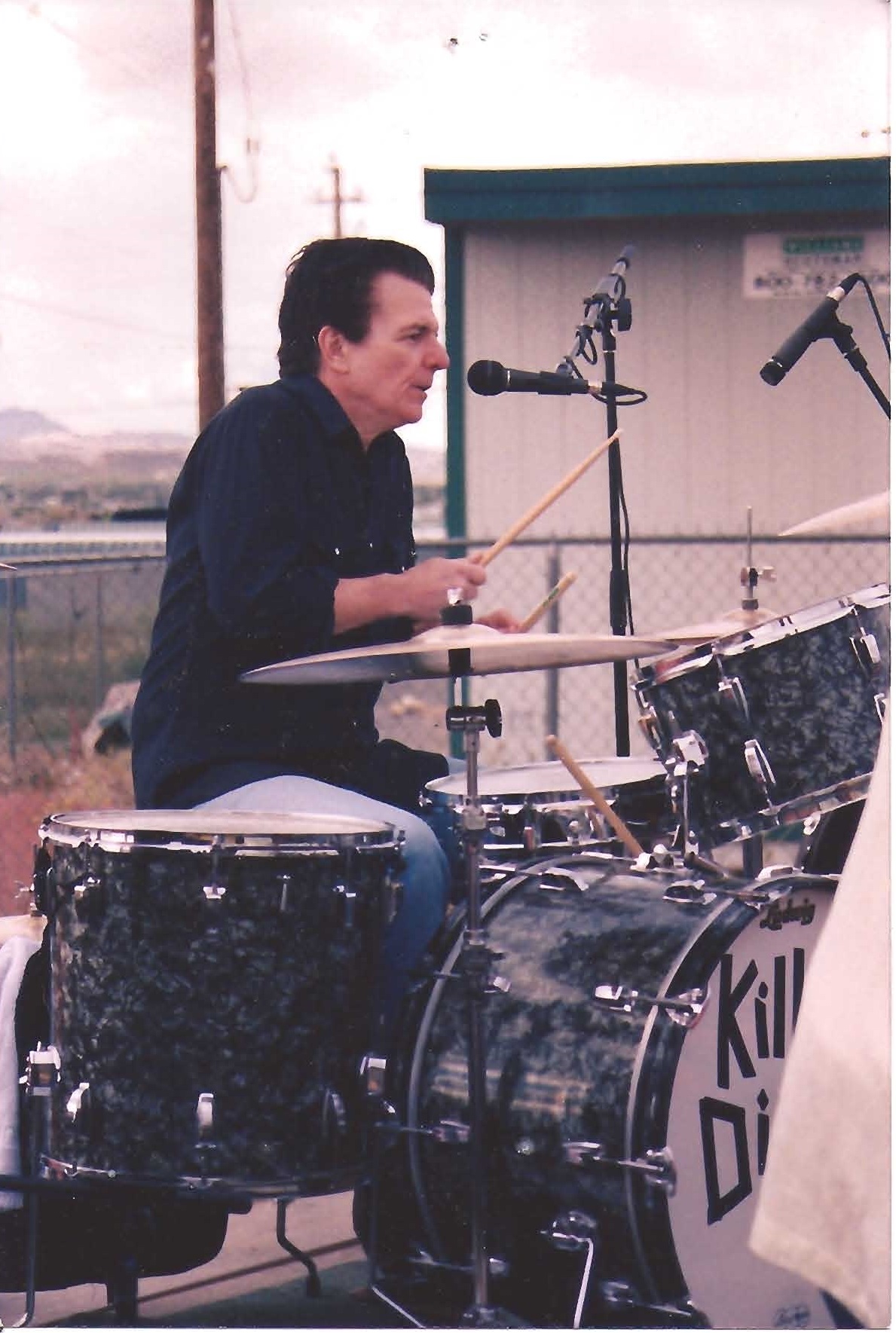DB:
You were part of rockabilly history. For those that may be less familiar with the genre, could you describe rockabilly, how it started, and what it may have led to?
SC:
Prior to what became “Rock and Roll” in the mid-late 1950’s, you had musical styles such as western swing, hillbilly, pop, rhythm and blues and such. Rockabilly came into existence around early-mid 1950’s, and was a mixture of western swing with rhythm and blues. An identifiable style of many early songs in the rockabilly genre is: a stand-up (acoustic) bass playing a slapback (which makes a percussive ‘clicking’ sound); solid rhythm guitar(s) playing a Merle Travis ‘flat-picking’ style; hiccup-y styled vocals with reverb mixed in and strong up-tempo rhythms.
Johnny Burnette and the Rock and Roll Trio came along with Paul Burlison on electric lead guitar. He intentionally recorded with a distorted (fuzz sounding) amp on the 1956 recording, "Honey Hush." [https://youtu.be/byr8J0DEa4Y]
Elvis Presley’s early recordings with Sun Records had only guitar, bass and vocals, and were considered Rockabilly. When he went over to RCA, and added drummer DJ Fontana, i.e. “Hound Dog,” they began marketing his music as Rock and Roll. And that term stuck - for good.
Rockabilly was the fuse that lit the stick of dynamite called Rock and Roll. I look at Rockabilly as the “punk” music of its day.
DB:
Ray Campi is sometimes referred to as "The King of Rockabilly." I watched some of the videos of Ray Campi & His Rockabilly Rebels, and it looked like the crowd was having a blast! How did you and the band connect, leading to you becoming their drummer?
SC:
By the time I met Ray Campi in 1974, I had already worked in a number of bands, toured the U.S. and into Canada, and also played a USO tour to Japan and So. Korea
In the summer of 1974, a friend of mine was hosting an ‘all-night’ Rockabilly variety show at Myron’s Ballroom in Los Angeles and he asked me to sit in with Ray Campi. Colin Winski was singing vocals and playing rhythm guitar. We ended up playing several shows together throughout the summer as the Rollin’ Rock Rockabilly Band.
A couple years later, Ray called me and asked if I could play with him on a Sunday night at The “world famous” Palomino Club in North Hollywood, CA. Ironically, this was a club on my ’must play’ list. “So it was, ‘Hell Yeah’ I’ll do the gig!” As a kid, I grew up about a mile from the “Pal” in the late 50’s and was always fascinated by the reputation the club had. On Saturday nights I remember hearing screaming and yelling in the distant sky. This was one of the most infamous, raucous, beer-bottle bustin’ honky tonks on the west coast. And it was ‘thee’ place to play for stars like Johnny Cash, George Jones, Buck Owens and the like.
So, we began playing Sunday nights at The Palomino and in a couple of months, it turned into headlining on Fridays and Saturdays. At this point, the band was now called Ray Campi & his Rockabilly Rebels, and consisted of five members: Ray, Colin Winski, Jerry Sikorski, John Blair and myself. The following year, lead guitarist Kevin Fennell joined the band, replacing John Blair.
After several shows at The Palomino, and in an effort to ‘pay our dues,’ we took just about any gig offered to us just to play. We played pizza joints, bars, colleges, store openings, etc., and eventually, played every major club in and around the L.A. area.
We ended up playing at the “Pal” many times, but the one night that especially stands out was the night we opened for Elvis Costello and The Attractions. Elvis had seen the band when we opened for Rockpile a few months earlier at The Whisky a Go Go in Hollywood, CA., and he loved us.
We also traveled up and down the West Coast and into Canada playing venues such as Mabuhay Gardens, The Catalyst, The Keystone, Old Waldorf, Boarding House, The Great American Music Hall (San Francisco), The Rainbow/Blue Moon (Seattle), PNE Gardens (Vancouver).
The group recorded two albums, with the second being released (with encouragement from Elvis Costello) on Radar Records, UK. The album, Wildcat Shakeout, was released in England. We went over to England and did a three week tour. While we were there we headlined gigs, and also played support for George Thorogood and The Destroyers and Bo Diddley.
The tour was a success and the record label wanted us to stay behind at the end and record another lp, this time with the production help of Dave Edmunds and Nick Lowe. For reasons above my pay grade, the decision was made to not stay and record. This decision essentially shot a hole in our dream bucket, and after returning back home and fulfilling some pre-booked gigs, the band splintered apart.
Colin, Jerry and I formed our own band called The Rebels. The group recorded some demos for Sire Records which were produced by Craig Leon. We also did some session work for an old friend, Chuck E.(‘s in Love) Weiss, who brought in Tom Waits, Dr. John and Rickie Lee Jones to help produce the project.
We played a lot around the L.A. area, and also played support for Tom Petty and The Heartbreakers (Damn the Torpedoes tour), and the West Coast tour segment for The Clash (Take the Fifth tour). But as with most new bands without a clear-cut direction, we soon broke up.
Soon after, The Rebels played together once again, backing Colin Winski covering two tracks on his solo lp, Rock Therapy, on Takoma Records.
DB:
What year were you inducted into the Rockabilly Hall of Fame?
SC:
July 10, 2000
DB:
You played drums on numerous albums with many artists. Can you name some of them?
SC:
Ray Campi & his Rockabilly Rebels - Born To Rock, [https://youtu.be/ZUXczsjo1uE]
Wildcat Shakeout, [https://youtu.be/9u_zgfAM9No]
Gone, Gone, Gone [https://youtu.be/Y5Eb2XPn3Fo]
Fred Blassie: Nothin’ But A Pencil Neck GEEK [https://youtu.be/XkB_CFi9row]
Mac Curtis: Rock Me [https://youtu.be/Ry5Swn6jwrw]
Jackie Lee Cochran: Rockabilly Legend [https://youtu.be/CMIAYa-JZQE]
Colin Winski: Rock Therapy [https://youtu.be/KFy4MXHe4uU]
Rockats: Downtown Saturday Night [https://youtu.be/1QhnqAJ4ueU]
DB:
You are involved with many drumming/percussion programs such as "Shake, Rattle, and Roll" and "Junior Drummer Music Education". Can you elaborate on these and/or some of your programs?
SC:
Junior Drummer Music Education is committed to cultivating a connection to music early in childhood development. By creating new approaches to rhythm and drumming instruction, and encouraging parent and teacher involvement, I believe we can make a positive difference in a child’s life.
Shake, Rattle, and Roll is a rhythm program designed for developmentally disabled adults at a care facility in Las Vegas. Participants were encouraged to try various percussion instruments, and then I taught them how to play basic rhythm patterns together as a group. It’s wonderful to see the expression on someone’s face when they play on a drum for the first time.
Make an Impression Drum Initiative - This was a six-month program sponsored by The International House of Blues Foundation, Drum Workshop, Pro-Mark, and Sabian. The concept was to take students who had no prior musical experience, teach them drum set basics with the final goal of performing solo along to a song they had chosen, on the main stage at the House of Blues in Las Vegas. All of the students who stuck with it did great!
Rockabilly Workshop is a one-day drum clinic taught within a Rock ‘n’ Roll Summer Camp scenario. I developed this class to introduce rockabilly drum beats, and style, including the role rockabilly played in Rock ‘n’ Roll history.
I am currently working with the Southern Nevada Wolf Trap Institute for Early Learning Through the Arts™. This program provides new arts-based strategies for pre-school teachers through disciplines of music, drama, dance, etc. I’ve developed a program teaching kids basic rhythm and counting skills while playing small hand percussion instruments.
DB:
Can you tell us about your experience studying at Dick Grove School of Music, and who some of your teachers were?
SC:
I was in a percussion ensemble at Dick Grove School of Music, led by Richie LaPore (percussionist with Elvis Presley). I was fortunate to attend many clinics that were held there, highlighted with those by Emil Richards, Jim Gordon and Richie LaPore.
DB:
What did you study with Jim Chapin?
SC:
I first met Jim at a clinic he held at West LA Music, CA. There were about 20 people there and everyone brought their pads. This was where I first introduced to the Moeller method. I saw him again in a clinic at Seattle Drum School, and he kept referring to Kenny Aronoff as “the Kid!” Ha! Then I took a private lesson with Jim at Donn Bennett’s Drum Studio in Bellevue, WA. Just listening to Jim recount stories was a lesson in itself. He told me that in his opinion, the drummer with the “best hands he’d ever seen,” was Pierre van der Linden from the band, Focus. Jim was such a wonderful man!
DB:
Ray Campi & His Rockabilly Rebels appear in two major Rockabilly documentaries, Blue Suede Shoes and Rebel Beat - The Story of L.A. Rockabilly. Can you tell us about that?
SC:
Blue Suede Shoes. When the band went to England to support the release of our LP, Wildcat Shakeout, our first show on the tour was at the Caister Rock‘n’Roll Festival in Great Yarmouth. Penny and Curtis Clark filmed the entire event and it was released in 1980 under the name, Blue Suede Shoes. They filmed our entire set of which three of our songs were included in the film. [https://youtu.be/26jFFHc4F2c]
Rebel Beat - The Story of L.A. Rockabilly. This is a film by Elizabeth Blozan. I will say that overall, it was a very good documentary encapsulating the origins of Rockabilly in L.A. and how it has evolved.
I was living in L.A. during the early/mid ‘70’s, and there was no ‘Rockabilly scene,’ per se. And at that time, most people had no idea what Rockabilly was. Together, along with The Billy Zoom Band, Ray Campi & his Rockabilly Rebels were the only two active revival ‘Rockabilly’ bands in the L.A. area.
I did feel they short-changed the impact of the original group, Ray Campi & His Rockabilly Rebels, by not recounting what that group contributed to what later became a ‘scene.’ Albeit, they did highlight film footage of our band from a 1979 Rockabilly Weekender show in Caister, England. [https://youtu.be/BilR99gR54M]
DB:
You were a contributing editor of The Ultimate History of Rock 'n' Roll Drumming book. What specific topics, facts, or history in the book did you help out with?
SC:
Daniel Glass gave me his transcripts and asked me, as a second pair of eyes, to go through and check if he had left anyone out. As with any project of this magnitude, some names get overlooked. My task was to find those artists and supply any information on their accomplishments.
DB:
Do you have any favorite drum books, and what were some of the drum books you studied years ago?
SC:
Podemski: Standard Snare Drum Method,
Louis Bellson: Modern Reading Text in 4/4,
Colin Bailey: Bass Drum Control,
George L. Stone: Stick Control,
Jim Chapin: Advanced Techniques for the Modern Drummer,
Ted Reed: Syncopation
DB:
Do you have any favorite drummers who influenced you?
SC:
My earliest influences and inspirations were Earl Palmer, Richie Frost, DJ Fontana, Sandy Nelson, Gene Krupa, Buddy Rich, Charlie Watts, Ringo Starr, Hal Blaine, Louie Bellson.
Others who have influenced me, or I admire, or just enjoy listening to are David “Panama” Francis, Brian Bennett, Clem Catini, Jim McCarty, Bennie Benjamin, Levon Helm, Clive Barker, Jim Gordon, Fred Below, Sam Lay, Odie Payne, Jeff Simon, BJ Wilson, S. P. Leary, Francis Clay, Al Duncan, Baby Face Foster, Keith Moon, Ian Paice, Clifton James, Sonny Payne, Jim Keltner, Bernie Dresel, Johnny Barbata.

